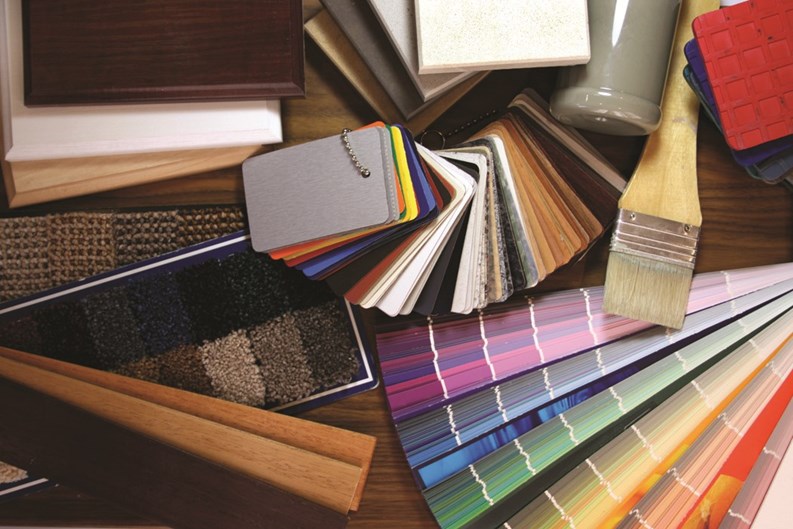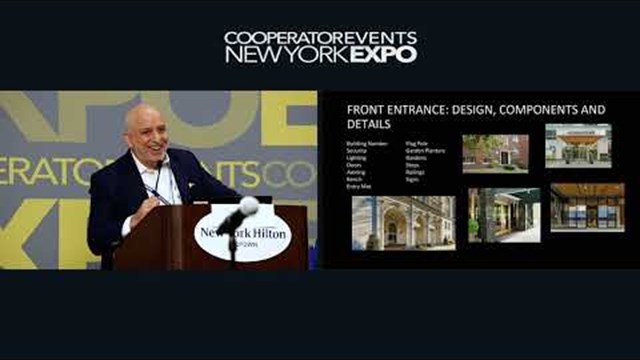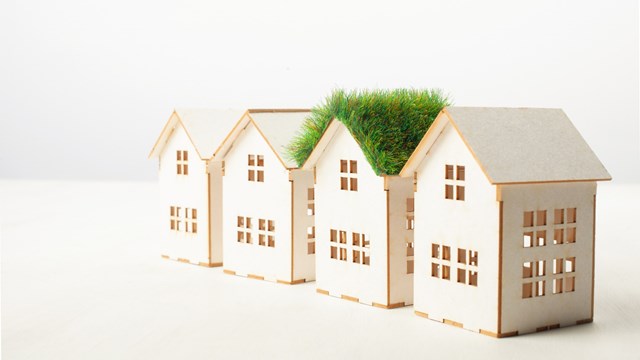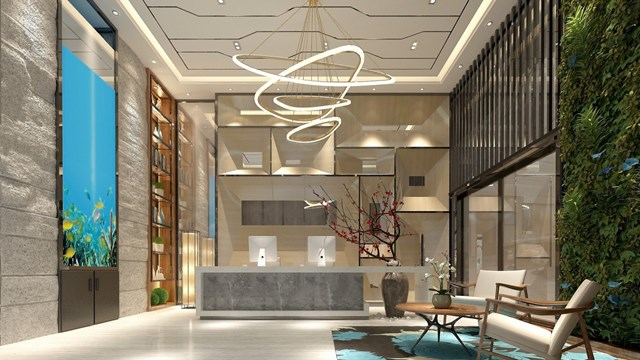New York is and has always been a city that celebrates reinvention and change, and that storied reputation has attracted generations of tastemakers. Interior design is one of the city’s largest talent pools and taking advantage of this valuable resource is one of the benefits of being a New Yorker. Trends come and go, and striking a balance between current and timeless can make a huge difference in the value of a property. We spoke to some experts in the field about how to approach a design project and what trends and innovations seem to be the most lasting and worthwhile to have come around in recent years.
Of-the-Moment Trends & Demands
There are many ways to revamp a property’s look and vibe—from a completely restructured lobby to a new coat of paint in an of-the-moment color. When considering a common space overhaul, the goal is to create a look that will sustain for at least 10-15 years, and possibly longer.
Joel M. Ergas, FASID, of Forbes-Ergas Design Associates, Inc. in Manhattan says, “For a lobby, if you give it good bones in the layout, it can go a long time by just replacing the perishables.” Ergas says that one of the most notable and seemingly lasting trends he’s witnessed in the past 10 years or so has been the need to accommodate the increase in package deliveries thanks to what he terms “The Amazon Phenomenon, which is driving some of the need to renovate. [It] has led to a need to rethink technological needs in terms of cameras and other technologies associated with managing deliveries, as well as needing appropriate space to accommodates the influx of packages.”
Susan Lauren, principal of Lauren Interior Design, LLC located on the Upper West Side of Manhattan says, “One of the most prevalent design trends I see today is that building interiors tend to be more modern and contemporary. This may be to compete with the construction of new high-rises that are going up all around the city, which tend to be very modern. Their interiors are architecturally clean and minimal, and the fabrics tend to have more texture and less pattern. Secondly, colors tend to be cooler than before. Tan and beige carpets were the rage a few years ago but today, clients prefer carpets with shades of gray.” Ergas agrees. “The trend has been toward neutral color palettes and often in the grey family. Nevertheless, the neutrals want to be clean and bright.”
Taste and trends can dictate a lot in the design world, but what is available to fulfill those desires is also dependent on what the market and manufacturers supply. According to Lauren, “A variety of new materials are continually developed for the design market. One of the biggest advances has been in the flooring industry. There’s now a great variety of excellent porcelain products, which are less expensive and more durable than other materials.” Given the current trend in color and the use of new materials, it is easy to understand why one of today’s most popular materials is a porcelain that looks like gray-stained light wood.
Innovation Catching Up to Demand
According to James Rixner, ASID, of Manhattan-based James Rixner Interior Design, Inc, advances in recent years in energy efficient lighting has made it possible to meet one of the most high-demand trends of recent years without aesthetic compromise: Green Design.
Rixner says the younger generation of first-time homebuyers are shifting trends towards not only good design, but ecologically-conscious design. This demographic is not interested in using ecologically-unfriendly materials, no matter how unique those materials may be. “As younger people are moving towards buying their first home,” says Rixner, “they are ecologically aware and concerned with the how and where materials are sourced.”
According to Rixner, “Innovation in green design is catching up - not only to demand and aesthetic standards, but also in terms of old fashioned durability.” Rixner says he sees the greatest improvements in what is available in green design elements over the last 5 years have been in lighting, which is especially good news when it comes to improving design in lobbies. “This innovation is very applicable where these lights are on 24/7,” says Rixner. “It saves the buildings a ton of electricity and money, and it’s no longer an aesthetic compromise. When energy efficient lighting came out 5 or 6 years ago, the design made much of it unusable aesthetically. Four or five years ago, everybody started getting on the bandwagon of the right coloration. The manufacturers have caught up with the desires of the consumers. They’ve got LEDs that look like traditional Edison bulbs, which look fabulous. Due to the advances in technology, you can get the exact same look in LED as you used to in a less efficient traditional bulb. An average size lobby can save an estimated quarter of the cost of yearly electricity, with the energy efficient bulbs lasting up to three times as long as traditional bulbs, that can mean significant reduction in maintenance cost as well without aesthetic compromise.”
Sourcing green materials isn’t the only way a design team can participate in the green design movement. Susan Lauren reminds us that there are green options available now in terms of disposal as well. “As a LEED-certified designer, I am delighted when buildings show an interest in green design,” she says. “I encourage buildings to take demolished materials to recycling plants instead of the dump site.”
Where To Start
When design committees and apartment owners are at the beginning of the process of a timely update or major aesthetic overhaul, knowing what’s out there is a great first step in a successful design conversation. According to Lauren, “The best way to know what is new and groundbreaking is to go see similar properties. For example, if you want to redo your lobby with a chic ‘downtown’ aesthetic, visit lobbies in Tribeca and other trendy downtown areas. Keep in mind that when you work with a designer, it is just as important to articulate what you want as what you do not want! I recommend that you take photos of properties that you visit and share pages in magazines to illustrate your taste. It’s true that a picture can speak a thousand words – and pictures are the best way to start the conversation and guide the design process.”
Rixner advises talking to a professional at the beginning of the process. “There’s a lot of information out there, and a lot of places to look at pictures on social media platforms, etc. As part of the educational process of a major overhaul, it’s best to talk to someone who knows what it takes from starting point to ending point. These projects are costly and disruptive to residents and others that will be using the building while it goes through its’ transformation.” Getting the right professionals on board early in the process can save a lot of time, hassle and money in the long run.
Timeless Trends
Knowing what makes a trend a timeless classic is part of what defines a designer’s talent. Creating the right mix of classic pieces and easily changeable of-the-moment elements is a great way to design with longevity in mind while leaving the door open to keeping things on trend.
Much of what we consider ‘classic’ today was notable for its quality of design and execution when it first appeared on the scene years or even generations ago - so what seems like a pricey investment in a piece of furniture or other décor today could actually pay off in the long run, as the superior design and construction stand the test of time. This has been especially evident in the lasting appeal of many stars of Mid-Century Modern design. Ergas says, “I’ve been around a long time, and I’ve seen a lot come and go. The really fine mid-century furniture, the original pieces, have been classics from the beginning. They always have been and continue to be classics for many of us—but for younger people, it’s a discovery.”
Rixner agrees. “What makes things a classic is the quality of how well they are made and the attention to detail that goes into the original design.”
Where the Professionals Come In
Working with the right designer for your building can make a huge difference - not only in the longevity of the design aesthetic, but also in terms of knowing where to invest your funds to get the most out of your aesthetic overhaul.
Rixner, who says he came to interior design through “the side door of architecture” with a Masters Degree in Urban Architecture, says much can be done to modernize a building’s vibe by paying attention to the first thing many guests and potential buyers will encounter when they cross the threshold: the front lobby. As the first point of contact, the lobby design and layout is responsible for guests’ and residents’ immediate reaction when they walk in the building, and Rixner advises design committees and owners to be “Very tuned into the effect of color on people and the environment. When you don’t have money, you can accomplish a lot with color and texture - and if you want to go with the color-du-jour or of-the-moment accent piece, you can pick an accent wall or on-trend desk and then change it out in 2-5 years.”
The right designer will work with owners and design committees to create the aesthetic that is right for the entire building community. Lauren says, “We consider a number of factors to determine which style is best for a building, such as location, the year the building was constructed, the demographics of existing residents and those you want to attract, as well as the style of the buildings that you compete with in your neighborhood. It is the designer’s job to strike the right balance so that the design will have broad appeal and remain fresh for many, many years to come.”
Renovation on any level can be exciting and daunting, but with the right resources, mindset, and professional team, the outcome can delight and satisfy residents and guests for years to come.
Kristina Valada-Viars is a freelance writer and playwright, and a regular contributor to The Cooperator.










Comments
Leave a Comment